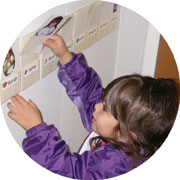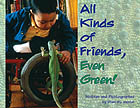Increase Access: Universal Design in Early Care & Education – Virtual Toolkit
Professional Development Activity
Begin by reading the Growing Ideas: Increase Access: Universal Design in Early Care and Education Tipsheet (PDF) and completing the Growing Ideas Into Action Handout (PDF) – A resource to use as you read and use the tipsheets.
Training Materials to use right away:
- Universal Design for Learning video from Northampton Community College; Building Inclusive Child Care.
Try, Review, Reflect and Plan:
The Universal Design for Learning video describes how programs can plan and prepare for diverse learners.
- Click on the first website link above to download the video Universal Design for Learning. It may take some time for the video to download.
- Select and try out some of the strategies shared in this resource in your program.
- Use the Increase Access: Universal Design in Early Care and Education Self-Reflection Guide and Documentation Sheet (PDF) to:
- Review, reflect and plan your work with children.
- Document your training hours.
Highly Recommended Resource:
Carter, M., & Curtis, D. (2003). Designs for Living and Learning, Second Edition: Transforming Early Childhood Environments. St. Paul, MN: Redleaf Press.
From Publisher’s website:
You likely have dreams for your early childhood environment that are greater than rating scales, regulations, and room arrangements. Designs for Living and Learning has been a favorite resource among educators and caregivers for more than a decade, and this new edition is packed with even more ideas that can be used as you create captivating environments that nurture children, families, and staff while supporting children’s learning.
Expanded chapters include new information reflecting current trends and concerns in early childhood, such as the use of repurposed and nontraditional materials, children in the outdoors, alternative ways to think about providing for learning outcomes, facing and overcoming barriers and negotiating change, and the impact of environmental rating scales in Quality Rating and Improvement Systems (QRIS). Two new chapters are included, one highlighting the transformations of environments with before and after photos and outlines of the process, and the other with examples of soliciting children’s ideas about the environment.
Children’s Book Selection:
Senesi, E. (2002). All Kind s of Friends-Even Green! Bethesda, MD: Woodbine House.
Book Description:
“In school, Moses, and the rest of his class are given the assignment of choosing a friend to write about. As he wonders which person to choose, he thinks of his circle of friends and what they share together. Some friends are kids like Jimmy, who says funny things, and Manuel, who races with Moses on the playground. Other friends are grown-ups like Mom and Dad, and teachers. Neighbors too, can be friends, like Kate, his teen-aged babysitter. Kate owns two really cute iguanas. One of the iguanas, Zaki, is missing toes. That’s it! Moses will write about Zaki. After all, they really have something in common. Moses and Zaki both have special needs. Zaki, with her missing toes, must figure out new ways to move around and get to where she wants to go, which is exactly what Moses must do in his wheelchair! More than just a story about friendship, ALL KINDS OF FRIENDS, EVEN GREEN! looks at difference—such as being in a wheelchair or missing toes—in a unique way…”
Interested in additional information on this topic? Visit our Increase Access: Universal Design in Early Care and Education Selected Resources page.
Have a professional development plan? As you read the Growing Ideas Tipsheets, and use the Virtual Toolkit training materials be sure to place your handouts/documentation of this work in your personal professional development portfolio.
Updated: 07/23/2024



